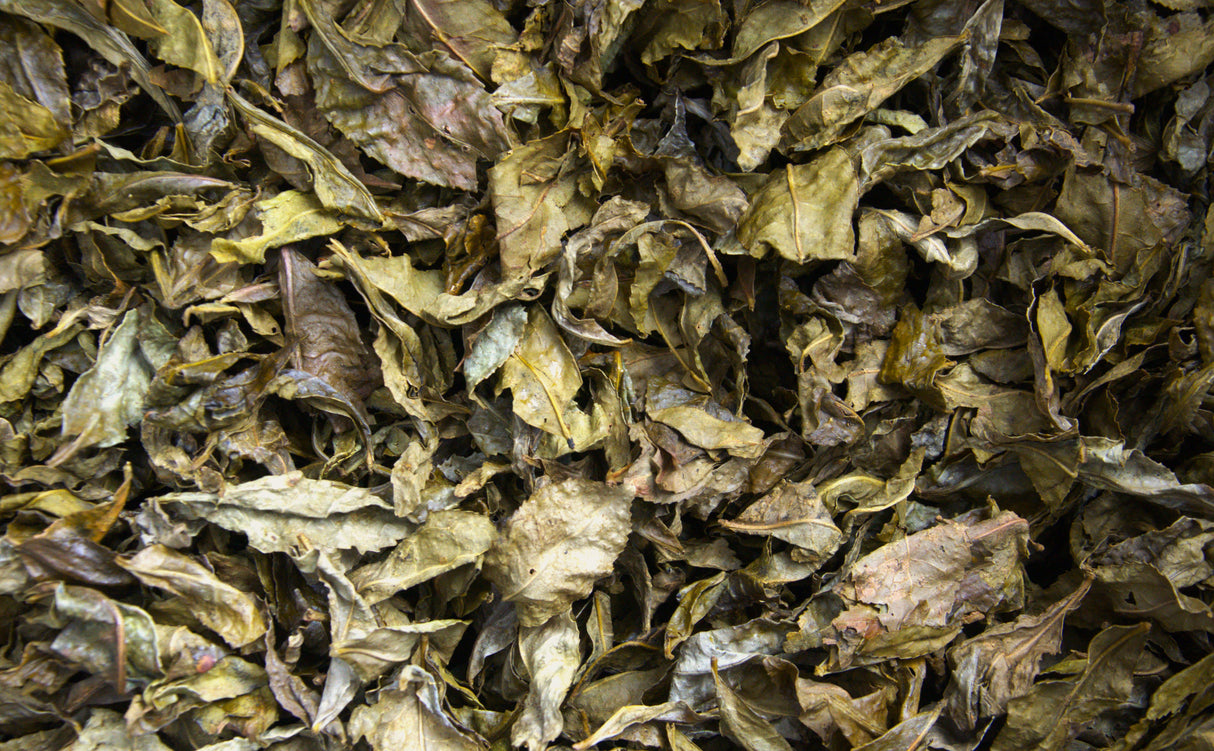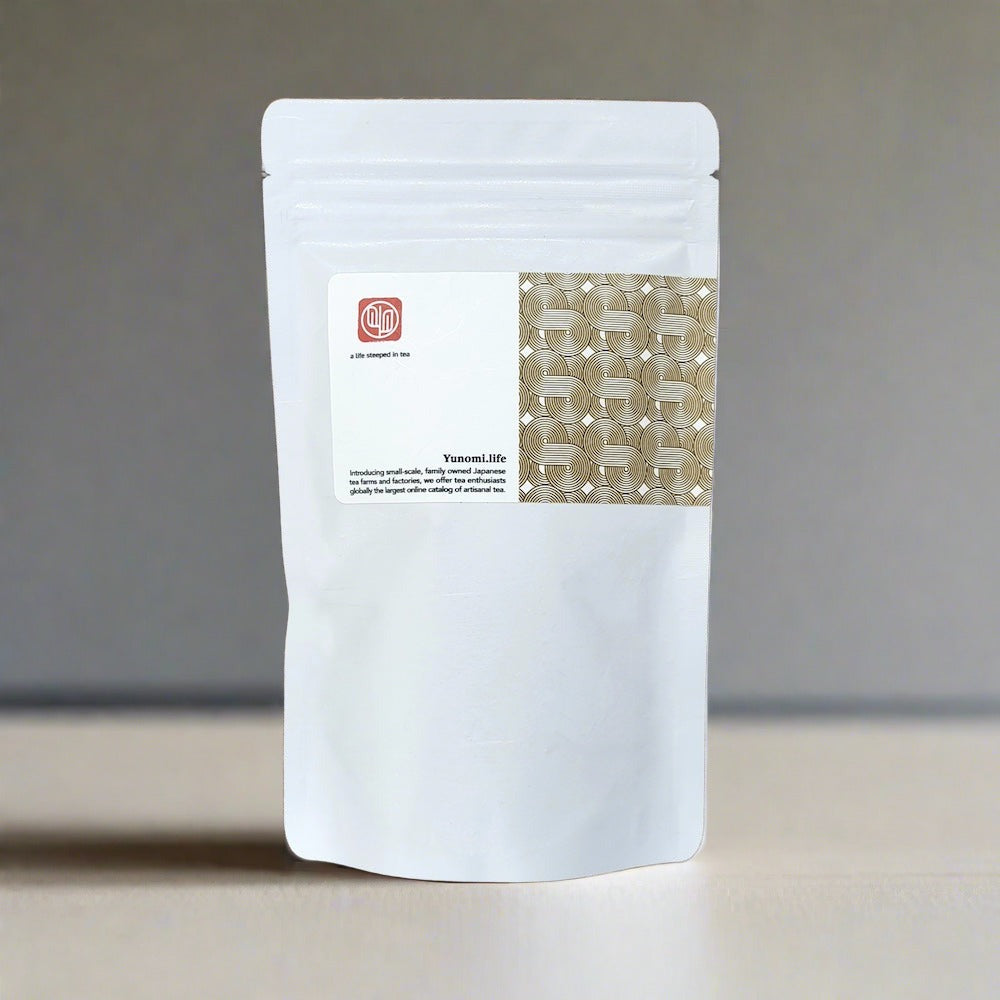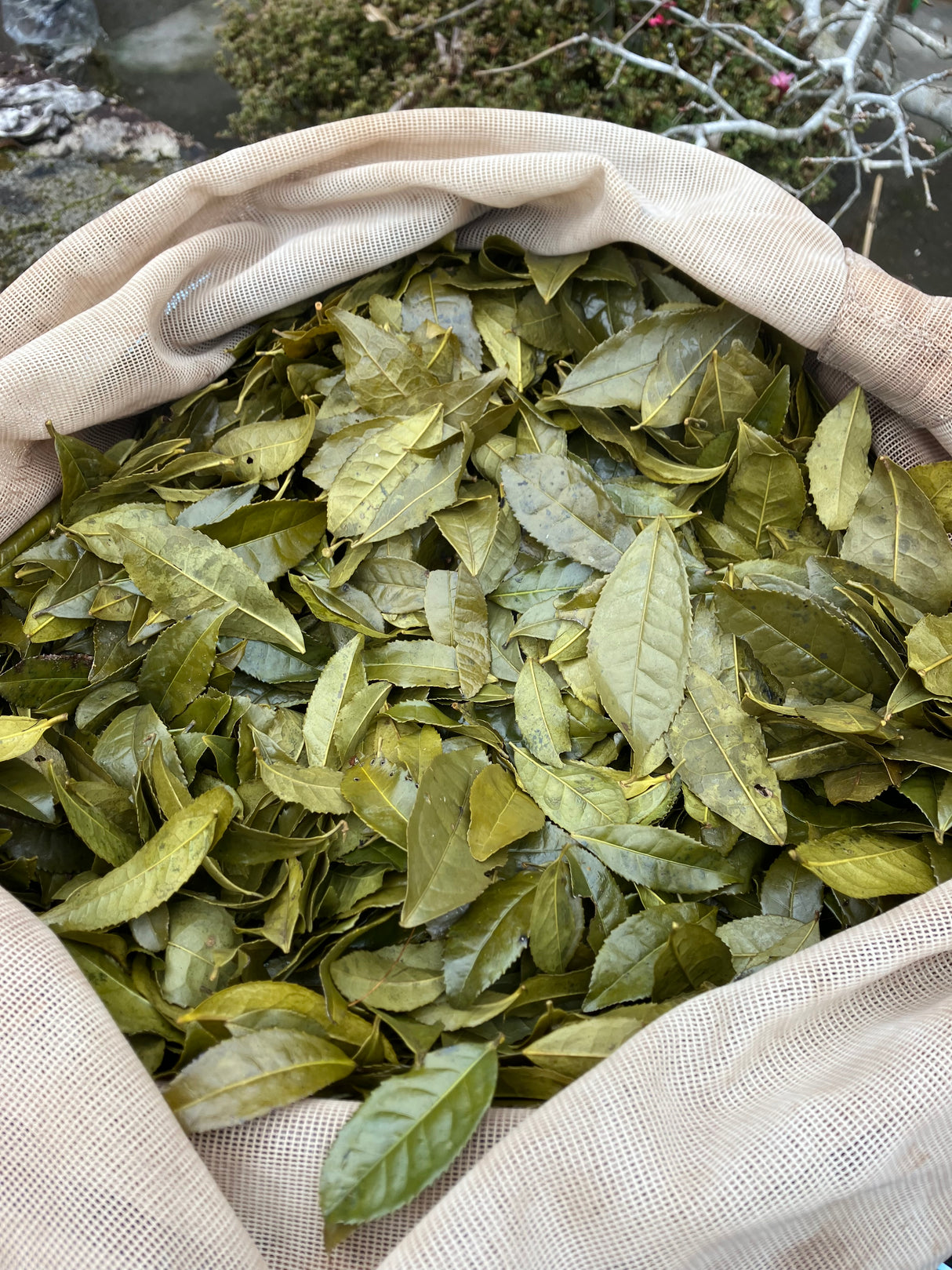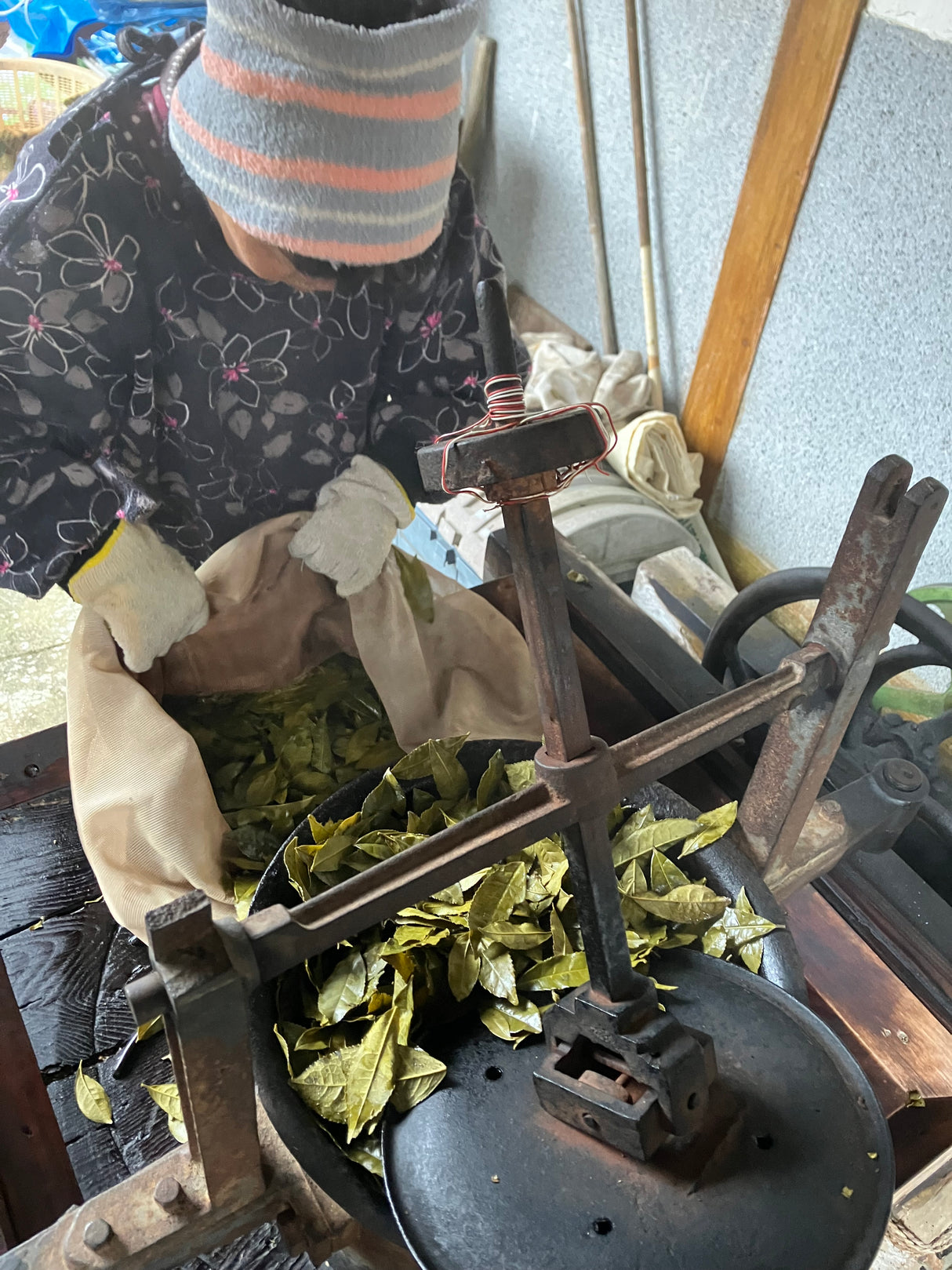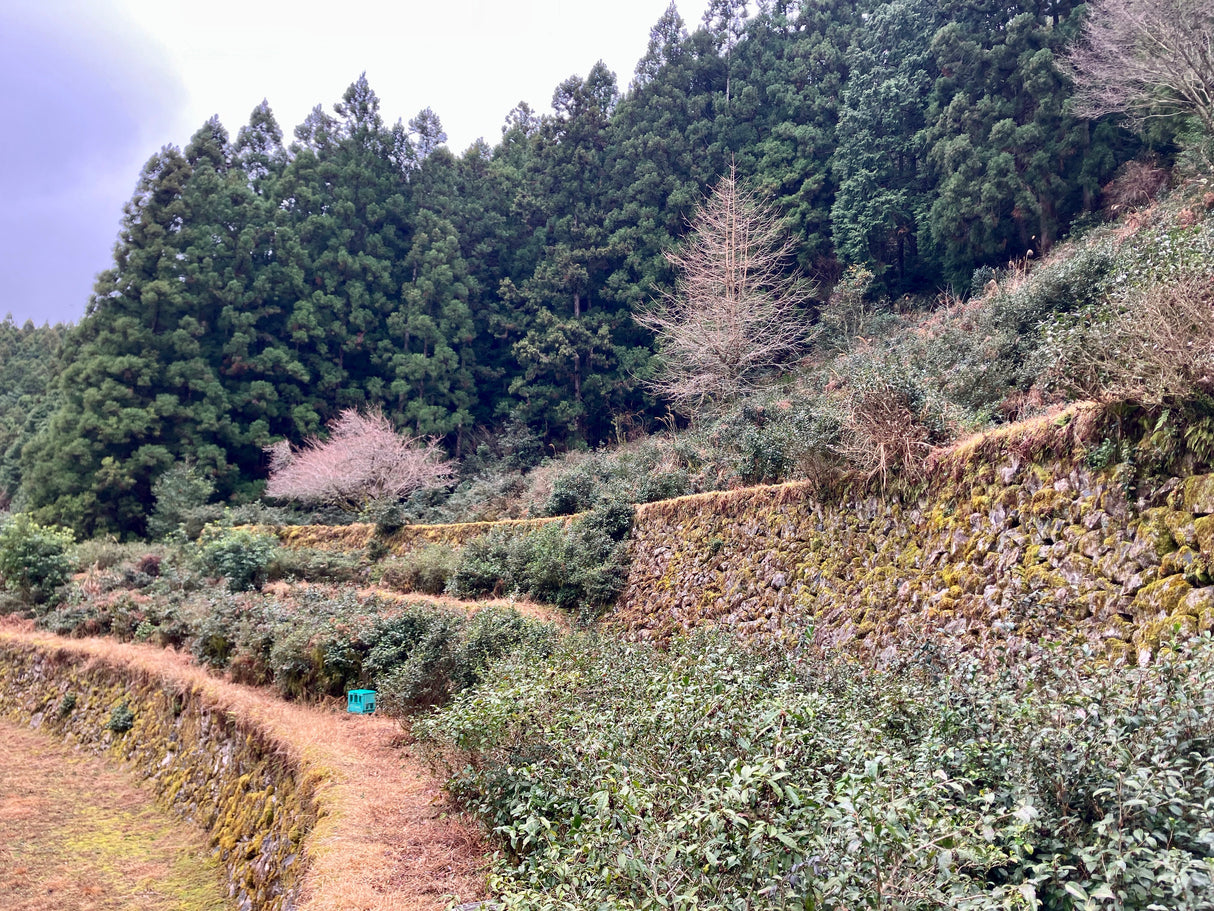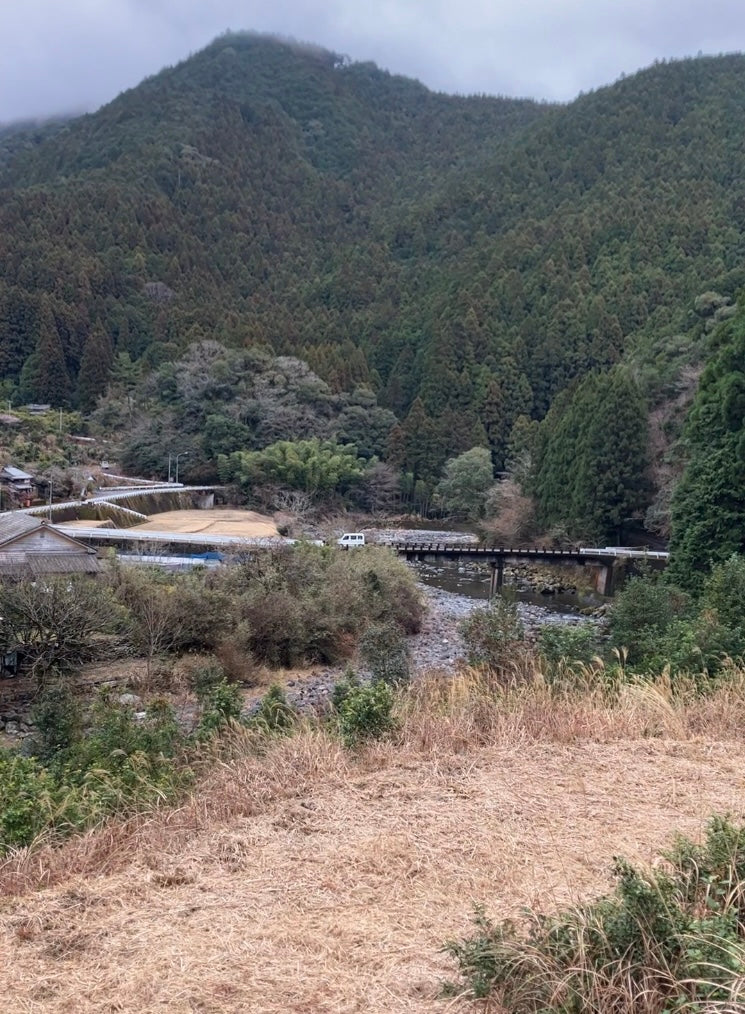#0834.T2 農家 石本明美さん厳選 徳島県産 ししくい寒茶
#0834.T2 農家 石本明美さん厳選 徳島県産 ししくい寒茶 - 500g / 1.1ポンド / 冬季収穫 (かさばるため、注文が配送プロモーション料金の対象となる場合でも、追加の配送料が必要になる場合があります。ご心配な場合はお問い合わせください。) 【在庫切れ】取り寄せ中につき、入荷次第発送します。大きいサイズを小さい袋に小分けするには1-2週間、取り寄せは2-3週間がかかりますが、商品によって異なります。現在、各メーカーの抹茶生産は非常に時間がかかり、1-3ヶ月間がかかる場合もあります。
受け取りを利用可能か読み込めませんでした
商品が在庫切れの場合は、ウィッシュリストに追加して、商品が購入可能になったときにメールで通知を受け取れるようにしてください。
配送と送料について
配送と送料について
送料は国、配送業者、配送方法によって異なります。商品を在庫に追加し、カートページに移動して送料見積もりツールをご確認ください。一部の国では、ご購入後に手動で送料を計算する場合があります。
YUNOMI.LIFEの配達保証:追跡番号付きの航空便で発送されるすべての注文の配達を保証します。 (条件が適用されます。通知された例外。)まれに、輸入のために追加の通関手続きが必要になる場合があります。私たちは最大限に支援いたします。お客様の過失によらず、発送から1ヶ月以内に注文が届かない場合は、追加料金なしで注文を交換または返金いたします。お客様の住所への配達が困難であると判断した場合、当社は出荷を拒否する権利を留保します。この保証は、受取人が通関手数料および輸入税の支払いを怠ったり拒否したりした場合、郵便局または配送センターで保留中の注文の受け取りを怠った場合、または間違った住所のために注文が配達できない場合には適用されません。Yunomi.lifeの配達保証は卸売購入には適用されません。
徳島県宍喰郡郭町の山里で作られる寒茶は、徳島県南部で特産される、古くから愛されている番茶です。
茶農家の石本明美さんは、何十年もの間、この地域の名産番茶の保存に努めてきました。彼女は約35年前に宍喰寒茶生産組合を設立し、地域の農家を結集して寒茶の収穫と生産を支援してきました。
この地域では、春に茶葉を収穫するのではなく、冬に成熟した粗い茶葉を収穫してきました。そうすることで、よりおいしくまろやかなお茶ができると人々は信じているからです。
過疎化と高齢化が進み、郭村の人口は現在わずか10人ほど。現在87歳(2024年時点)の明美さんは、カンチャの伝統を守り続ける唯一の存在です。茶摘みと加工は重労働のため、お茶作りは最初から最後まで明美さん一人で行っています(友人や小学生、お茶好きの人たちが、収穫作業を手伝うこともあります)。
明美さんは、自分以上にカンチャを愛する人に出会ったことがないと言い、また、今年がカンチャ作りの最後だと毎年言っています。
カンチャ加工
多くの番茶と同様に、かん茶は成熟した大きな葉から作られます。かん茶の特徴は、寒い冬の時期に葉が収穫されることです。明美さんのかん茶は、以下の工程で作られます。
- 彼女は1月1日から成熟した冬茶の葉(長さ約10センチ)を手摘みします(3月10日までに複数回作ります)。
- その後、葉を柔らかくし、酸化を止めるために 25 分間煮ます。
- 最初に機械で茶葉をマッサージし、最後に明美さんが手で巻いて仕上げます(注:以前はすべて手で巻いていました)。
- その後、葉は樽の中に一晩置かれます。
- その後、明美さんの温室(川の向こう側)に運ばれ、樽から取り出されて、天候に応じて2〜5日間乾燥させられます。
- 最後に、晴れた日に葉を外に出して乾燥させます。明美さんは、最後の天日干しはカンチャ作りの工程において非常に重要だとおっしゃいます。太陽のエネルギーをもらうのは特別なことなのです。
製品情報
- 原材料:緑茶
- 収穫時期:寒い冬の時期(1月1日~3月10日)。
- 地域:徳島県獅子久井町郭村
- 栽培:農薬不使用
- 地域:徳島県獅子久井郡郭村
-
品種在来
-
収穫時期冬の収穫
-
産地徳島 - 徳島県
-
販売者種類農場, 家族経営
支払いのセキュリティー対策
支払い方法
お支払い情報は安全に処理されます。当社はクレジットカード情報を保存したり、お客様のクレジットカード情報にアクセスしたりすることはありません。

